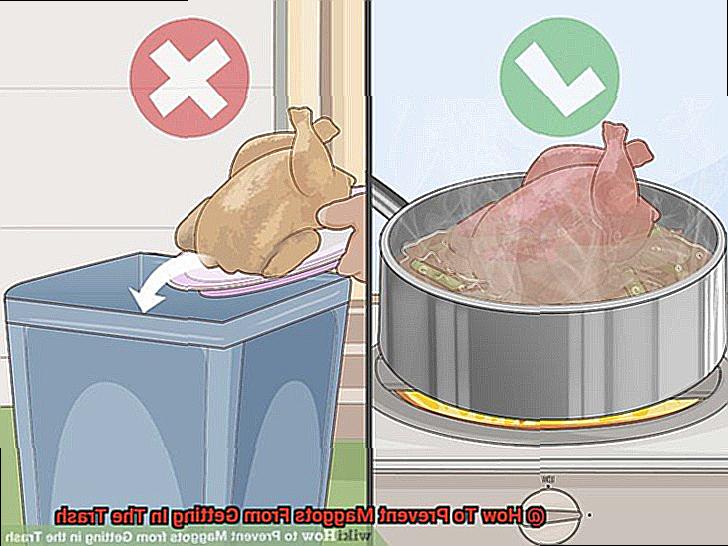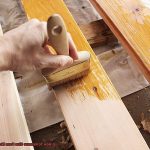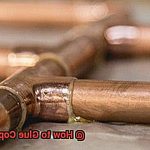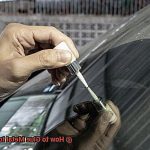Have you ever found yourself staring at an unsightly glue residue on your walls?
It’s a common problem, especially if you’ve recently removed wallpaper or completed a DIY project. But don’t worry, removing stubborn glue from walls can be easier than you think.
There are several quick and effective methods for removing glue from walls. One option is to use vinegar, water, and a scraper.
This technique works well for smaller areas of glue that can be easily scraped off with a plastic scraper or putty knife. For larger areas of glue, you may need to use a commercial adhesive remover or other solvents.
If you’re looking for a chemical-free alternative, baking soda and coconut oil are also effective options. This method is gentle on walls, making it ideal for older or fragile surfaces.
So roll up your sleeves and get ready to tackle the job – your walls (and eyes) will thank you.
What Type of Glue Are You Dealing With?
Contents
When it comes to removing glue from walls, the first step is crucial: identify the type of glue you’re dealing with.
After all, different adhesives require different methods for removal. If you use the wrong approach, you could end up damaging your wall or making the problem worse.
So let’s dive into the various types of glue you may find on your walls and how to recognize them. First up is water-based glue, which is often used for wallpaper or temporary decorations.
This type of glue is relatively easy to remove with warm water and a sponge or cloth. Simply moisten the area with hot water and gently rub the glue until it loosens.
But don’t despair if the glue is stubborn – you may need to repeat this process several times. On the other hand, solvent-based glue is much stronger than water-based glues and requires a more aggressive approach to removal.
It’s often used for construction projects or permanent decorations. To dissolve the glue, you can use solvents like acetone or rubbing alcohol.
But before you do, test the solvent on a small, inconspicuous area of the wall to make sure it won’t cause damage. It’s also essential to consider the surface of your wall when choosing a removal method.
For example, if you have plaster walls, you’ll need to take a gentler approach to avoid damage. In some cases, it might be best to call in a professional who can remove the glue safely and effectively.
Before tackling larger stains, remember that patience is key. Try any product or method on a small area first to avoid causing damage.
Different brands of adhesives require different methods for removal, so choose your approach wisely.
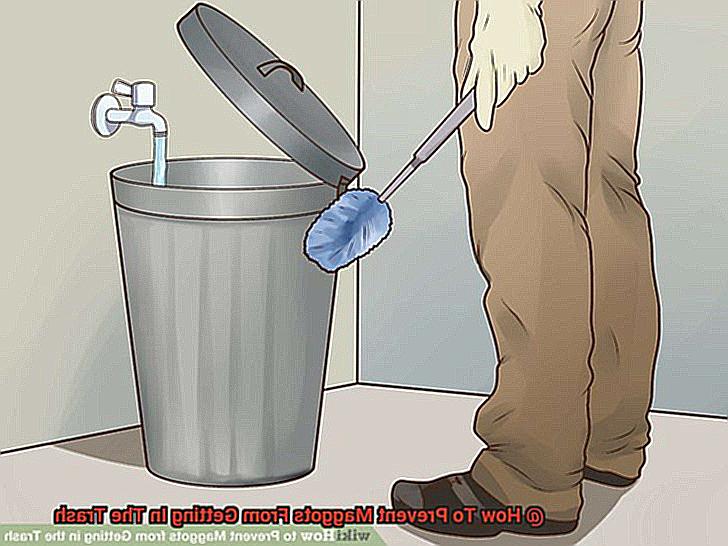
Scraping Off Excess Glue
Removing excess glue from walls can be a tricky task, but with the right approach, it can be done safely and efficiently.
Before starting, it’s crucial to have the right tools on hand, such as a putty knife or scraper and a bucket of warm soapy water. It’s important to let the glue dry completely before scraping it off.
Otherwise, you risk spreading the glue around and making an even bigger mess. Once the glue is dry, use your scraper or putty knife to gently remove as much glue as possible.
Remember to take your time and avoid applying too much pressure to prevent any damage to the wall surface. If you encounter stubborn glue that won’t come off easily, try softening it with a hairdryer or heat gun.
This will make it easier to scrape away without causing any harm to the wall. Once you’ve removed as much glue as possible, wipe down the wall with warm soapy water to eliminate any remaining residue.
You may need to repeat this step a few times until all of the glue is removed. If you’re working on a painted wall, it’s essential to be extra cautious not to damage the paint.
Use a gentle touch while scraping and consider using a plastic scraper instead of a metal one to minimize the risk of scratching or chipping the paint.
Removing Water-Soluble Glue
With the right tools and techniques, you can easily remove water-soluble glue from your walls without any hassle. The first step is to identify what type of water-soluble glue you’re dealing with, as different types may require different removal methods.
For example, school glue or white glue can be removed by using a damp cloth or sponge to soften the glue. Once the glue has been softened, use a plastic scraper or putty knife to gently scrape the glue from the wall.
It’s important to be gentle and avoid scratching or damaging the wall surface. If you’re dealing with wallpaper paste, you can create a mixture of warm water and white vinegar in a spray bottle and spray it onto the affected area.
Allow the mixture to sit for several minutes to soften the glue, then use a scraper or putty knife to gently remove the glue from the wall. But what if you’re faced with a stubborn water-soluble glue that won’t budge?
No need to worry. You can try using a commercial adhesive remover.
However, it’s important to follow the instructions on the product carefully and test it on a small, inconspicuous area of the wall before applying it more broadly.
Using Commercial Adhesive Remover or Rubbing Alcohol
With the right tools and techniques, removing glue from walls can be a breeze. In this blog, we’ll explore the safe and effective methods of using commercial adhesive remover or rubbing alcohol to remove glue from walls.

Both commercial adhesive removers and rubbing alcohol are safe to use on most surfaces, including painted walls, without causing any damage or discoloration. The key is to follow safety instructions when using these products.
When using commercial adhesive remover, it’s crucial to read the manufacturer’s instructions carefully. Typically, you’ll need to apply the remover to the affected area, wait a few minutes for it to penetrate the glue, and then gently scrape it off with a scraper or putty knife.
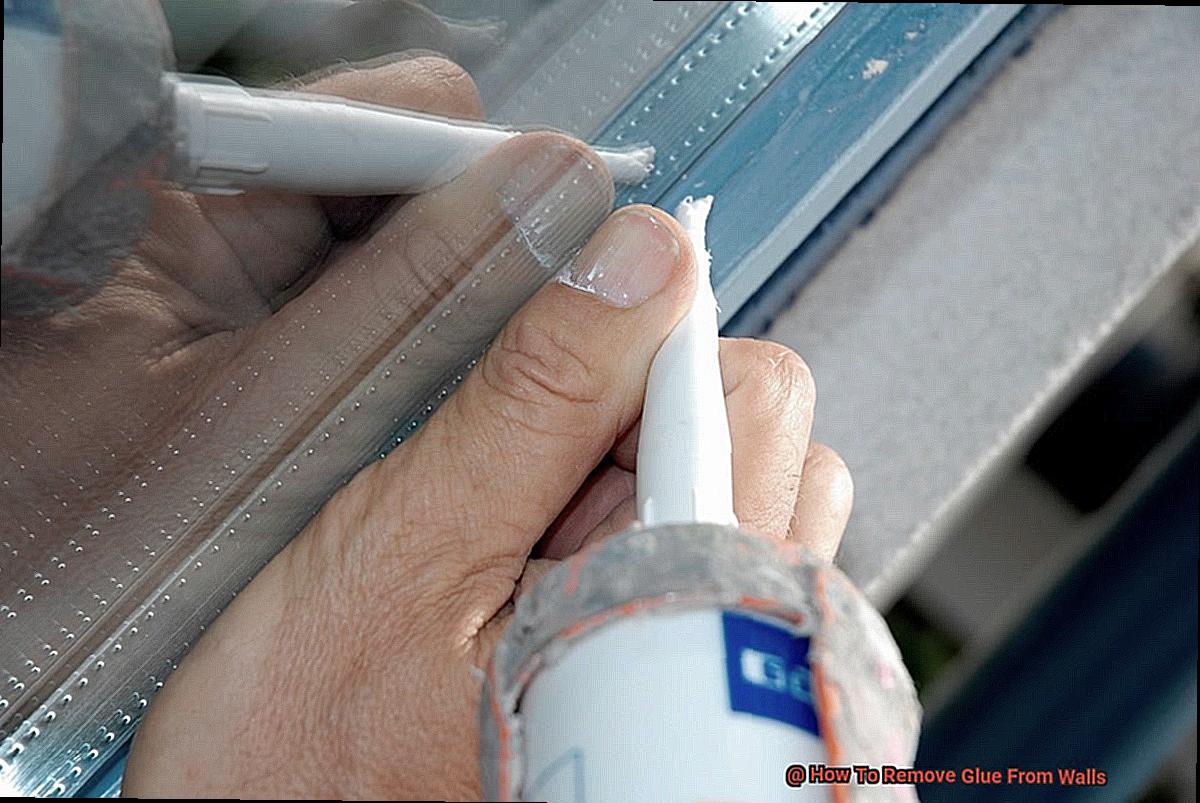
For safety purposes, wear gloves and ventilate the room as some removers can have strong fumes. Rubbing alcohol is another effective solution for removing glue from walls.
It’s safer than other chemical solvents and won’t harm most surfaces. To use rubbing alcohol, simply moisten a clean cloth with the alcohol and rub it over the glue until it dissolves.
Then gently scrape off the glue with a scraper or putty knife. However, keep in mind that rubbing alcohol can be flammable.
Always keep it away from any open flames or heat sources. Additionally, test a small, inconspicuous area of the wall first before using rubbing alcohol on a larger surface to ensure it won’t damage or discolor the paint or surface.
Just remember to read instructions carefully, wear gloves and ventilate the room when using commercial adhesive remover, and test a small area before using rubbing alcohol on a larger surface.
Using a Heat Gun or Hairdryer to Soften the Glue
Using a heat gun or hairdryer is an effective method to soften the glue and make it easier to remove, especially when dealing with those old, stubborn glues that have been on the wall for a long time. However, before diving into this method, take note of some important safety measures.
Always wear gloves and safety glasses when using a heat gun, and keep it away from any flammable materials. Safety first.
Next, hold the heat gun or hairdryer about six inches away from the glue and apply heat for about 30 seconds. Keep the heat moving to prevent any damage to the wall or scorch marks.
After applying heat, use a scraper or putty knife to gently lift the glue from the wall. It’s important to proceed with caution as using a heat gun for too long or too close to the wall can cause damage.
So take your time and be careful. In conclusion, using a heat gun or hairdryer is an effective way to soften glue and make it easier to remove from walls.

Applying White Vinegar and Warm Water Solution
White vinegar and warm water are the perfect solution to this problem. White vinegar is a natural, non-toxic cleaning agent that can break down the adhesive properties of glue, making it easier to remove.
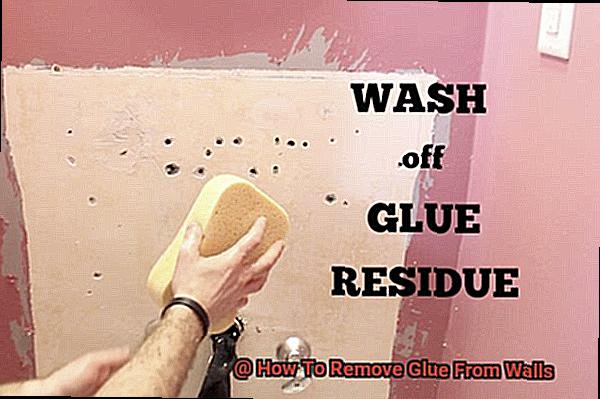
And the best part? You probably already have it in your pantry.
To get started, mix equal parts of white vinegar and warm water in a spray bottle. Give it a good shake to make sure it’s well mixed, then spray the solution onto the affected area.
Let it sit for about 15 minutes to give the vinegar time to soften the glue. Once the glue has been loosened, use a scraper or putty knife to gently remove it from the wall.
Be sure to work slowly and carefully to avoid damaging the wall or removing any paint. If needed, apply more of the vinegar and water solution and repeat the process until all of the glue has been removed.
After all of the glue has been removed, use a clean cloth or sponge to wipe down the wall with warm water to remove any residue from the vinegar solution. Finally, dry the wall thoroughly with a clean towel.
Also Read: How To Remove Adhesive From Wall Without Damaging Paint …
Conclusion
In conclusion, don’t let the thought of removing glue from your walls intimidate you.
With the right tools and techniques, it can be a breeze. The first step is to identify the type of glue you’re dealing with as different adhesives require different methods for removal.
Once you’ve determined the type of glue, there are several simple and cost-effective ways to extract it from your walls. For small areas of glue that can be easily scratched off, vinegar, water, or a scraper will do the trick.
However, larger areas or more rigid adhesives may require a commercial adhesive remover or other solvent. Baking soda and coconut oil are gentle yet effective at removing glue from older or fragile surfaces.
When stripping off excess glue from walls, it’s crucial to have the right equipment on hand and take your time. Always follow safety instructions when using chemical solvents such as rubbing alcohol or commercial adhesive remover.
If you prefer a chemical-free alternative, try using a white vinegar and warm water solution made with household items.

